Hello my fellow fisherman! Today we are going through some deep waters and filleting your fish! Surely you asked yourself once in a life how to fillet a fish? Here’s the ultimate guide on filleting, and yes, your hands will get dirty (but we like it)!
What is the best knife to fillet a fish?
Forget about your jungle machete, today we need a slim and sexy filleting knife. If you don’t have one, no biggie, but you can really buy a good one for a few bucks or get the handy posh one to tell your friends about, we don’t care as long as it’s sharp!
The fillet knife is slim and elastic, with a nice curvature line (yea, we like the curves)! It needs to be very sharp to be good to work with and for your cuts to be precise and clean. You will also need some other knives, like a chef’s knife, paring knife and kitchen scissors! But again, if you don’t have a clue about any knife type, you can do everything with your basic kitchen knife, as long as its nicely sharp and not too big. We got the knives lets bring in the fish!
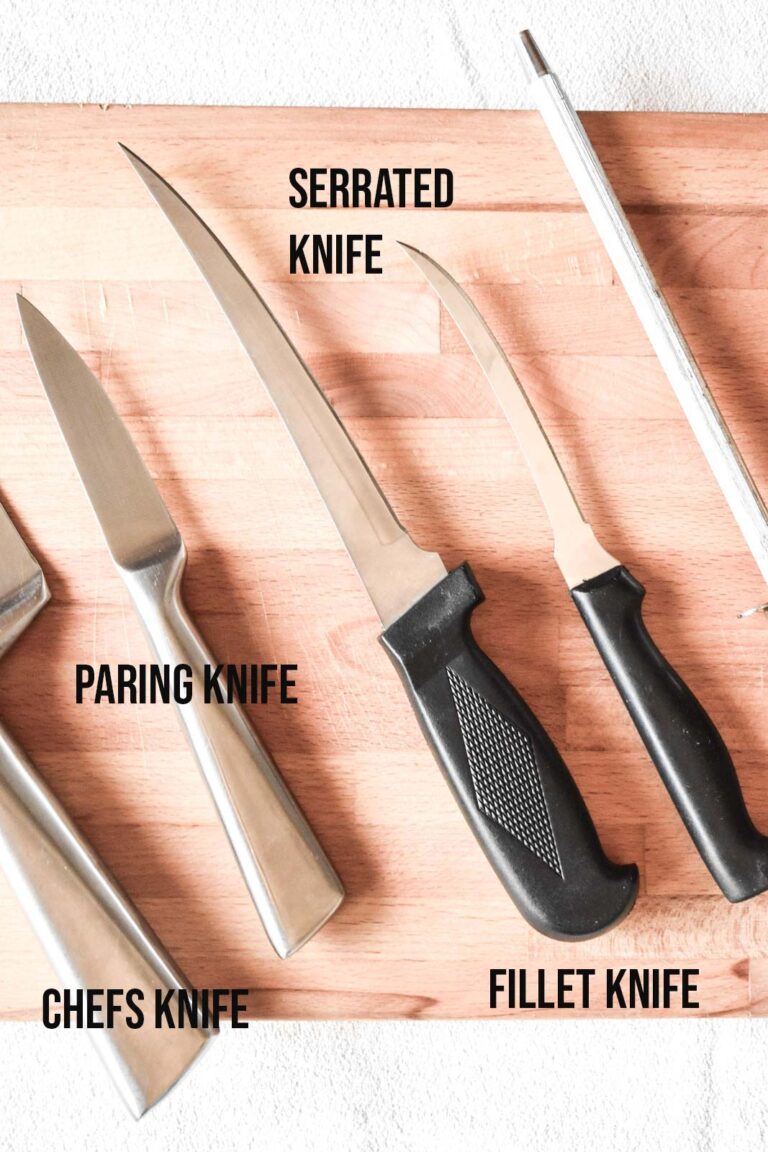
Know your fish!
For this example, we will fillet a sea bass, mainly because his shape represents the majority of fish out there! But they say there’s plenty of fish in the sea, and every looks a little different, (let’s hope yours looks just as you like it).
Catfish, Monkfish (the ugly, but yummy one), Snapper, Sea bass, you name it! Start with the simple ones, and soon you’ll know how to fillet the whole ocean (but don’t, for obvious reasons).
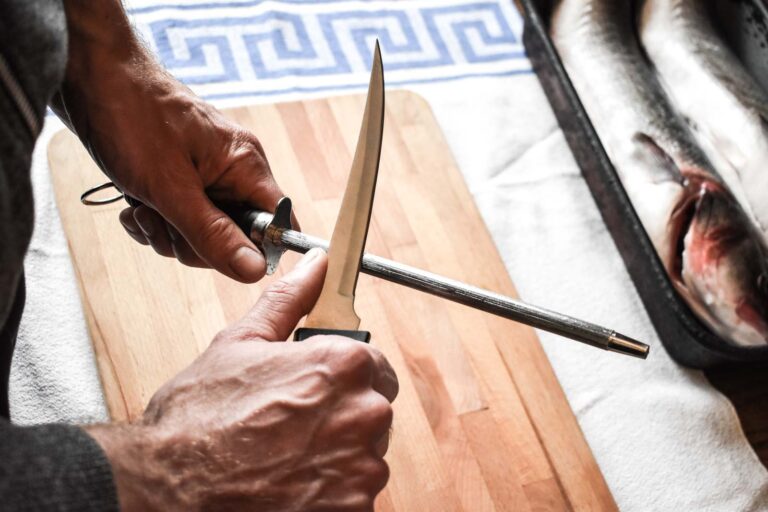
1. Gutting the fish
You can ask your fishmonger to gut it for you, I mean, they do it for free, but in case you have a breakneck-freshly-released-from-jail fishmonger, you can ask for the fish (if you dare) and gut it yourself! Take a sharp knife and search the belly of your fish.
Find the hole on the belly of the fish (it’s their anus, but don’t be scared though, if you like it more, call it little belly dot) put the top of the knife in the little belly dot (anus) and clean cut superficially in the direction of the fish head.
Next, take out the guts with your (bare) hands, and try not to cut or damage the fish bile, (yellow thing), because its really bitter and if damaged, can leave a bitter trace in the fish meat. If the fish is smaller in size you should also be able to remove the gills with the intestines, if not, cut them out separately.
Search the insides for any remaining organs and remove all of them. Wash out the insides with fresh water and that’s it! Now you are ready for the next step. You can be proud of yourself!
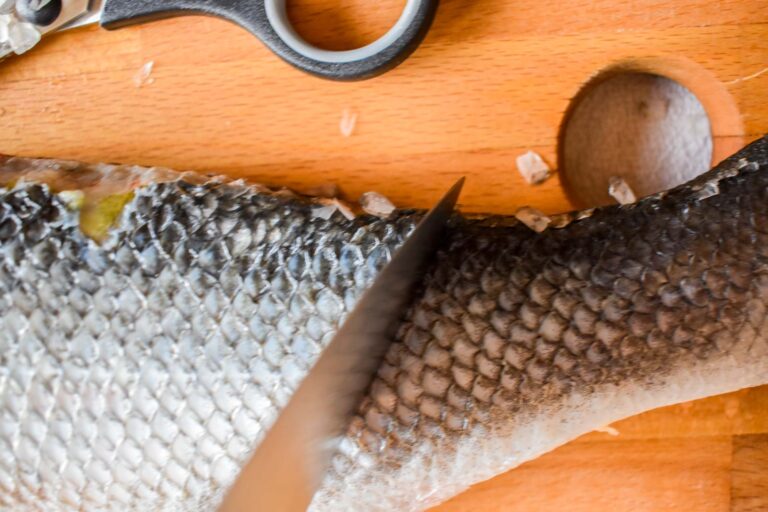
2. How to descale your fish?
Scales on your fish are definitely a no go! You need to remove them precisely from the whole skin surface of your fish. On fresh fish they can be quite hard to remove, so we use a smaller knife, like a pairing knife, also we use its blade to do so.
Before doing anything, take your fish to the sink (because the scales will be everywhere, I mean really everywhere, and we don’t want that) and descale it there! Use your pairing knife to stroke the scales of the fish! It should go fairly easy. Remove all of them!
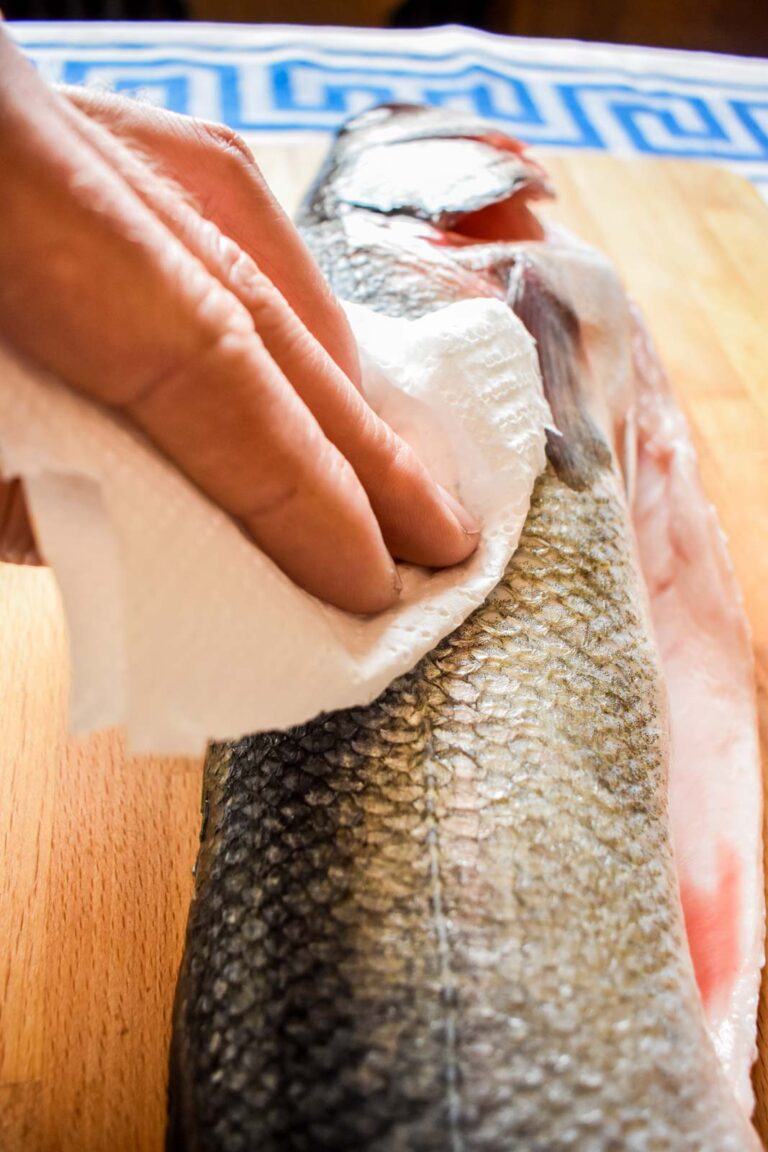
3. Wipe the remaining water!
Fresh fish can be slimy, therefore it’s recommended to wipe off the liquid from its skin before going to the next steps. This way you make sure you don’t harm yourself with the knife (and let’s be honest, the slimy fish isn’t the best thing to hold in your hands)!
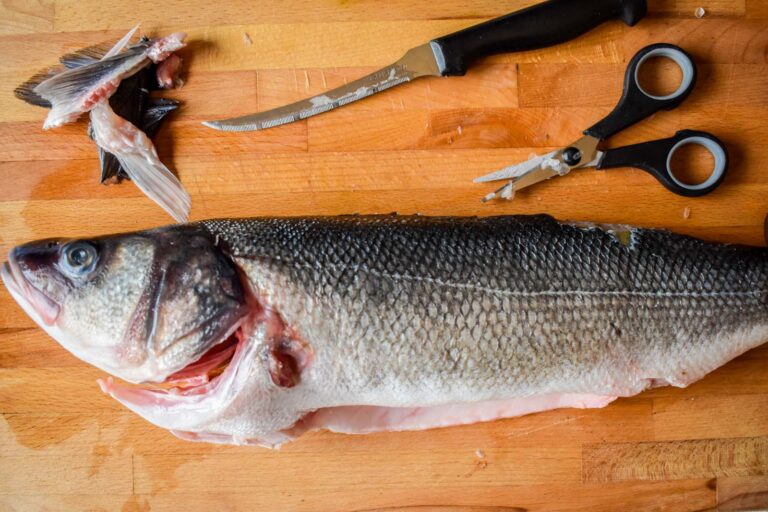
4. Remove the fins
Depending on the size and hardness of your fish you can do it with kitchen scissors (or your normal ones, because let’s be honest, who has kitchen scissors) or a small serrated knife (if the fins are stronger). This step needs to be done because of better handling your fish afterwards.
5. Remove the head
You need to be strong now my darling. Yes, you will decapitate the fish, but on the other hand, you will get nice fish fillets, so it’s a win. To do so you need to find the top point! It’s the spot where the fish’s body (and meat) ends, and its head begins (see picture below). Now make a clean cut from the top point to the stomach of the fish. The cut needs to be at a slight angle facing the stomach! You made now the perfect cut through the meat, now repeat the step on the other side of the fish!
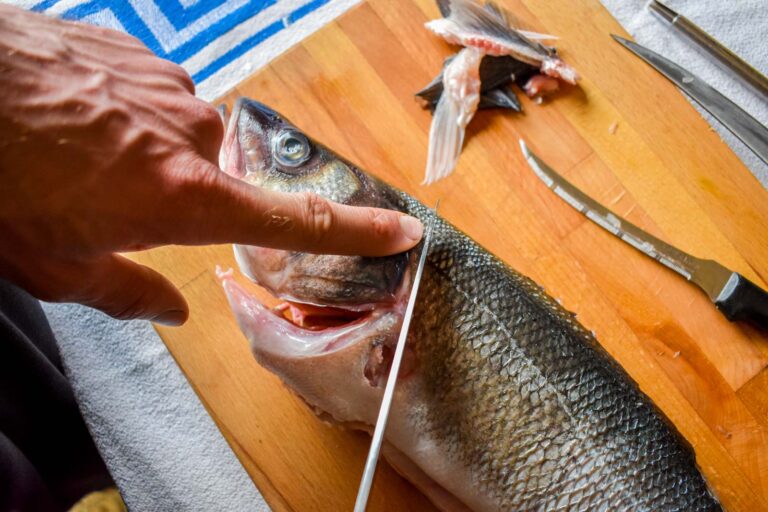
The only thing holding the fish now is the spine! To remove it you need to put a lot of pressure on your chefs knife and cut right through! That’s it! Now your fish is ready for filleting!
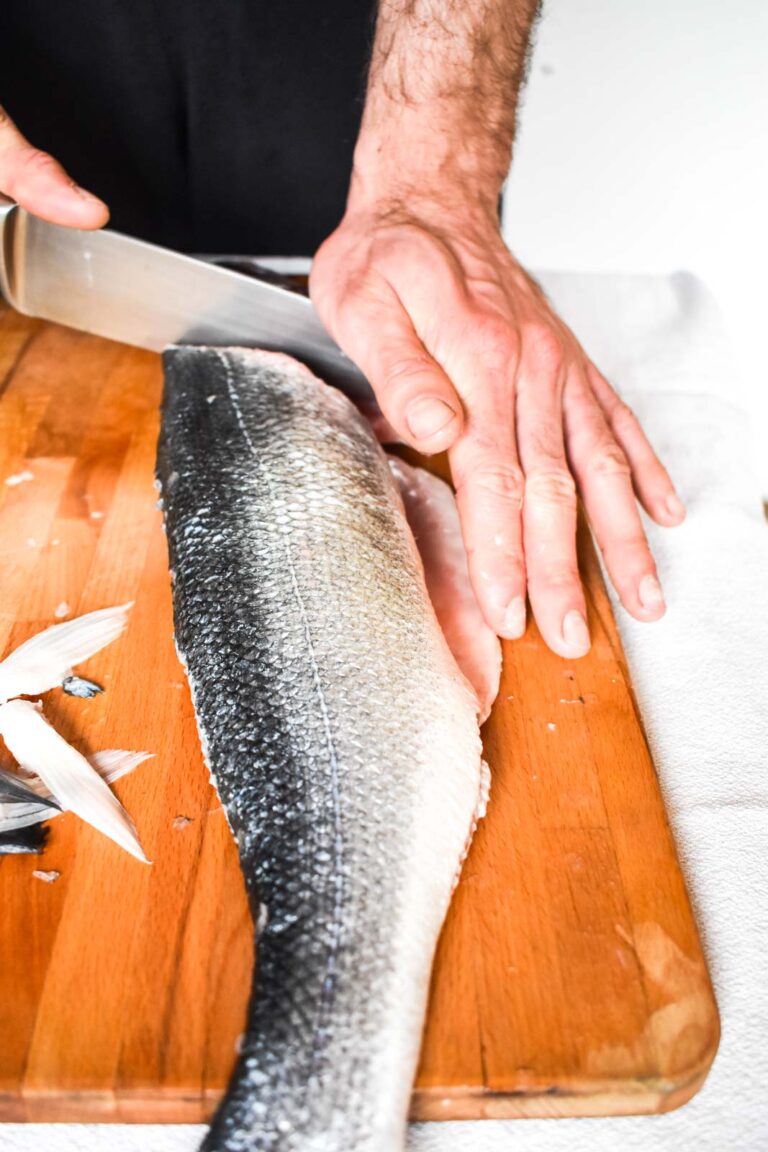
6. Find the top point and cut the basic line!
Again, find the top point of your fish! Take your filleting knife and make a superficial cut from your top point to the direction of the tail. The cut needs to be as close to the spine as it can! The secret to a perfect fish fillet is a sharp knife and the ability to cut as near to the bones and spine as you can! That’s the reason why your file knife is thin and elastic. Use this advantage!
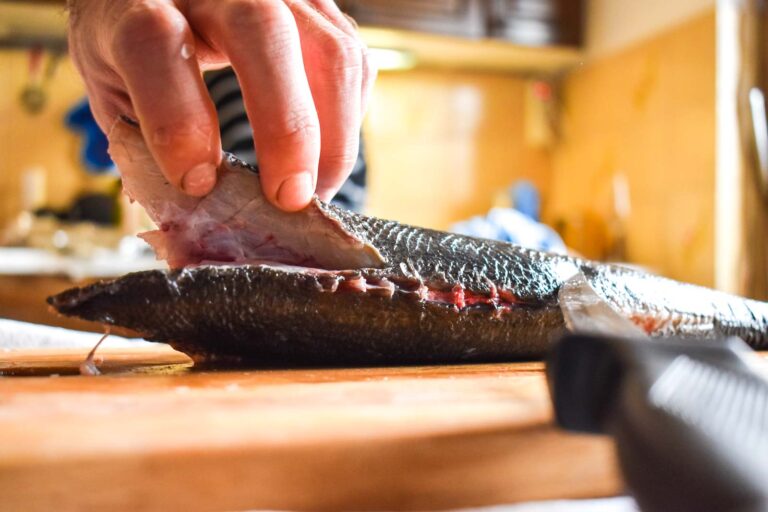
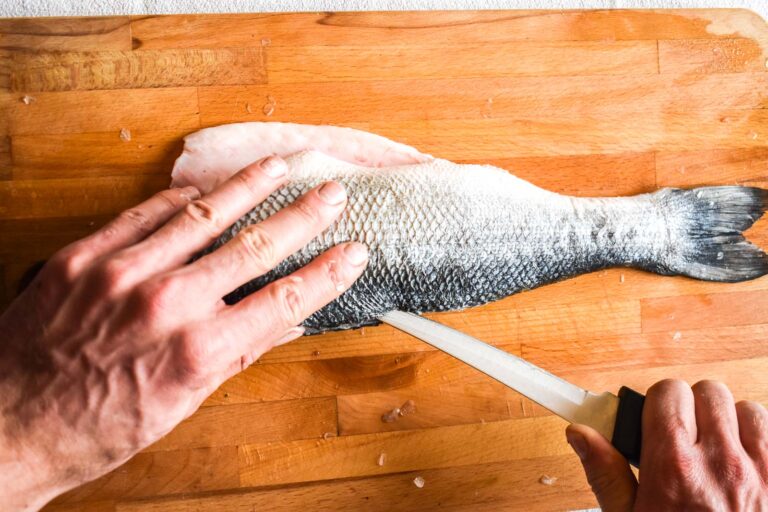
7. Make deeper cuts
When you made your superficial filleting line extending from the top point to the tail, it’s time to make deeper cuts.
The cuts need to be as close to the bones and spine as they can be. When you come past the spine, use the elasticity of your knife to bypass the spine and cut again deeper until you come to the stomach side of the fish!
When making deeper cuts, do them evenly on the whole fish! When you are over, you’ll be holding your own, perfect, fish fillet! Now turn over the remaining fish and repeat this step again! The other side can be a little more difficult to handle, but repeat the steps again, and remember to be always as near the bones as you can!
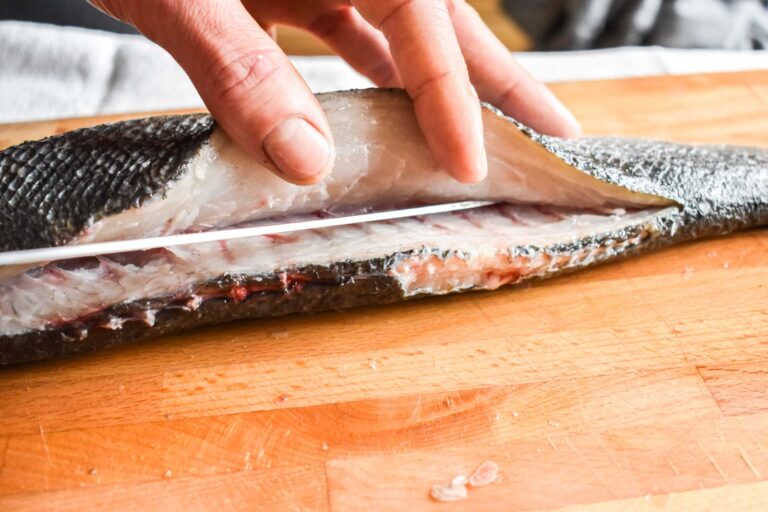
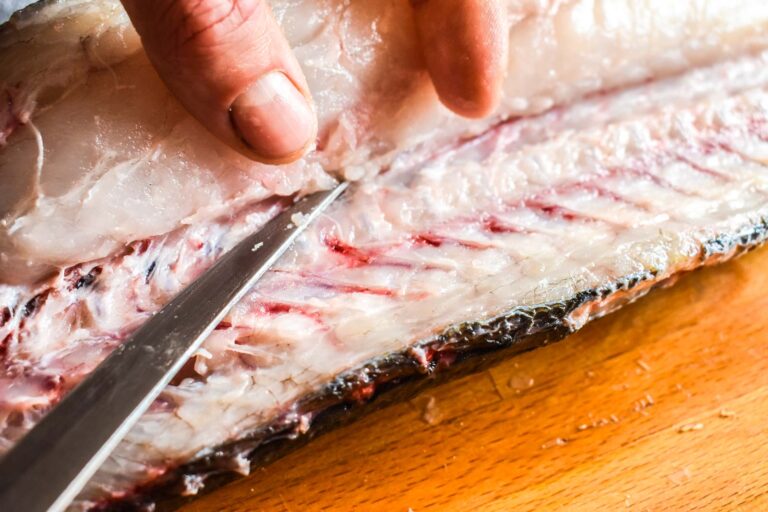
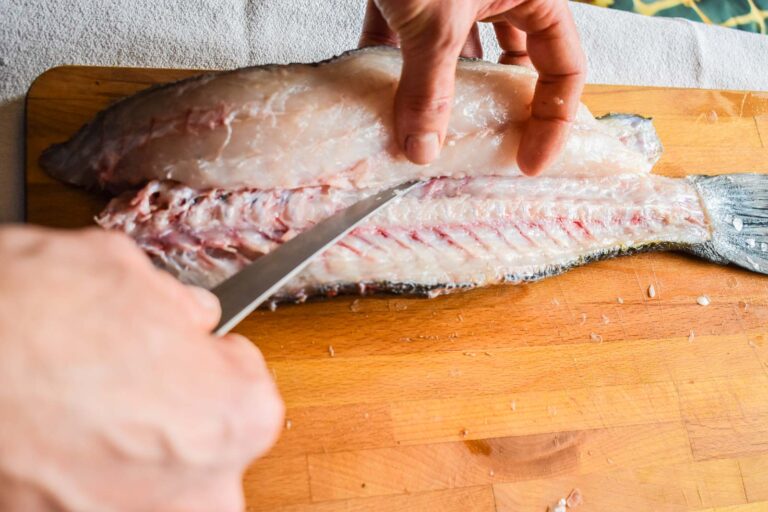
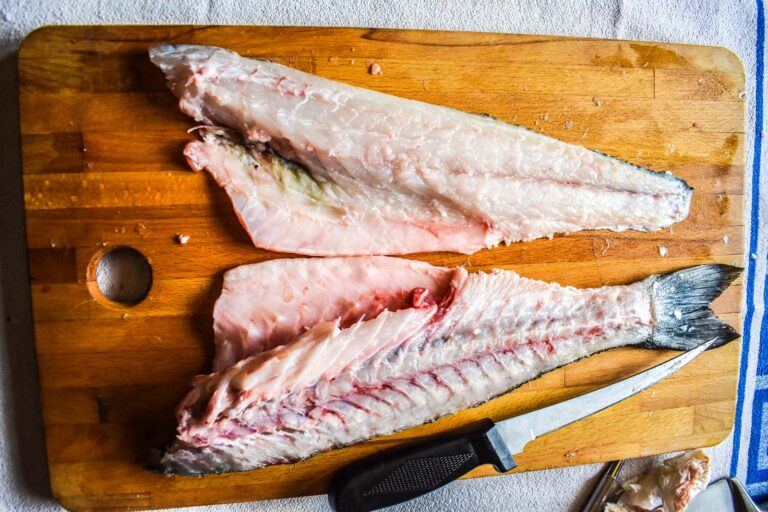
8. Remove the remaining bones
Get your tweezers and remove the remaining bones from your fillets! No one really wants to find bones in their fillet! To accomplish this, you need to know where the remaining bones are. With your fingers go over the soft fish meat and feel the remaining bones.
The bones are often arranged in lines in the meat, so follow the line to find the others! When removing the bones, try not to tear out too much meat with the bones! Happy searching!
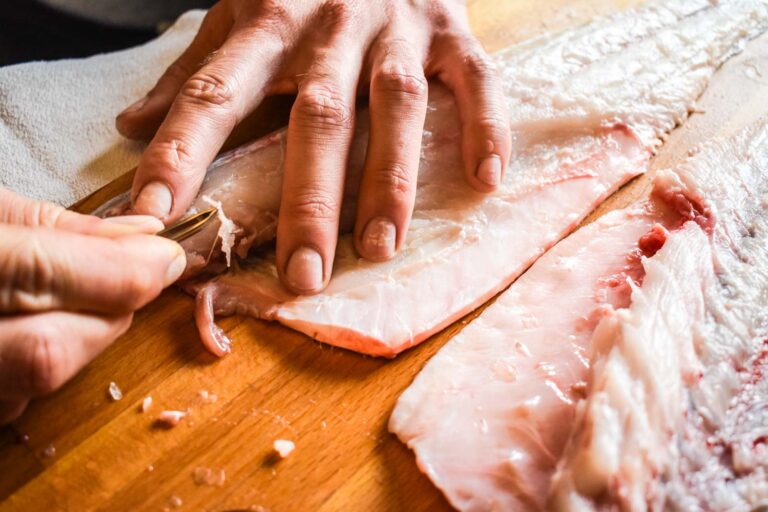
9. Cut your fillets into smaller pieces
Take your fillets and cut them into suitable portions. The number of pieces you get depend on the size of your fish, but you need to cut about 3 pieces per each fillet. We leave the skins on the fillets, because there’s no better thing than crispy baked skin, but if you don’t like it, you can remove it (but don’t).
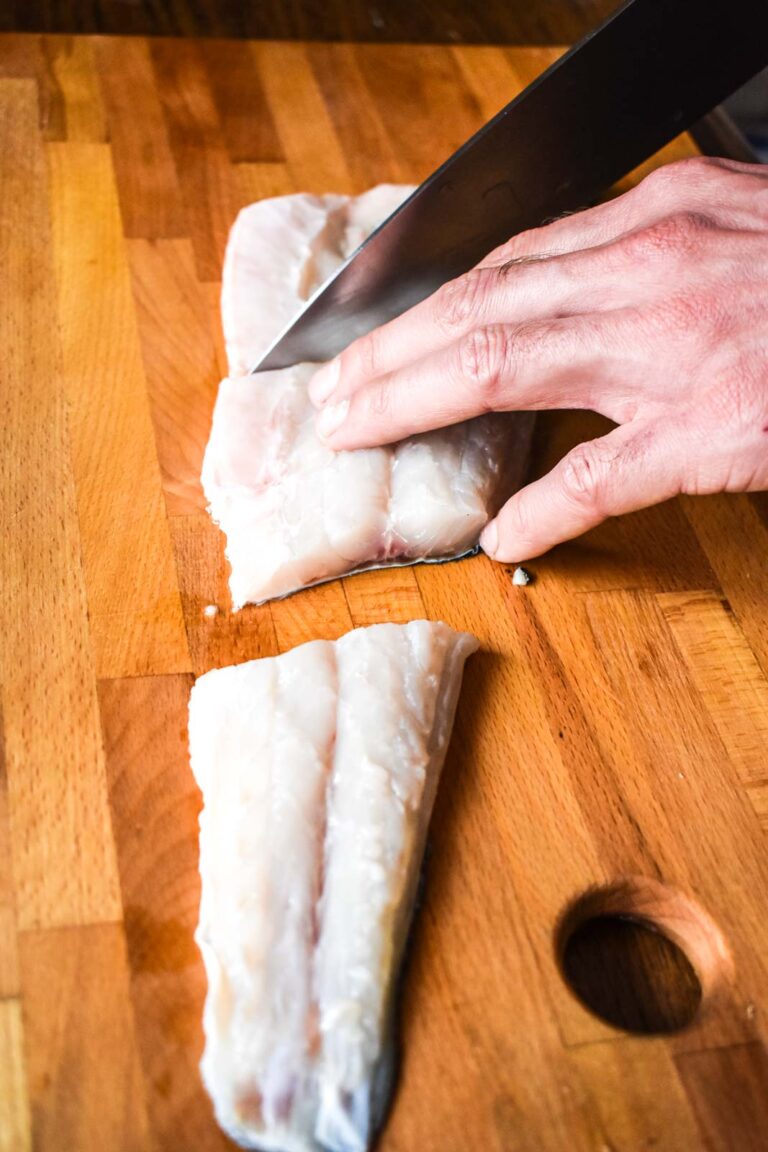
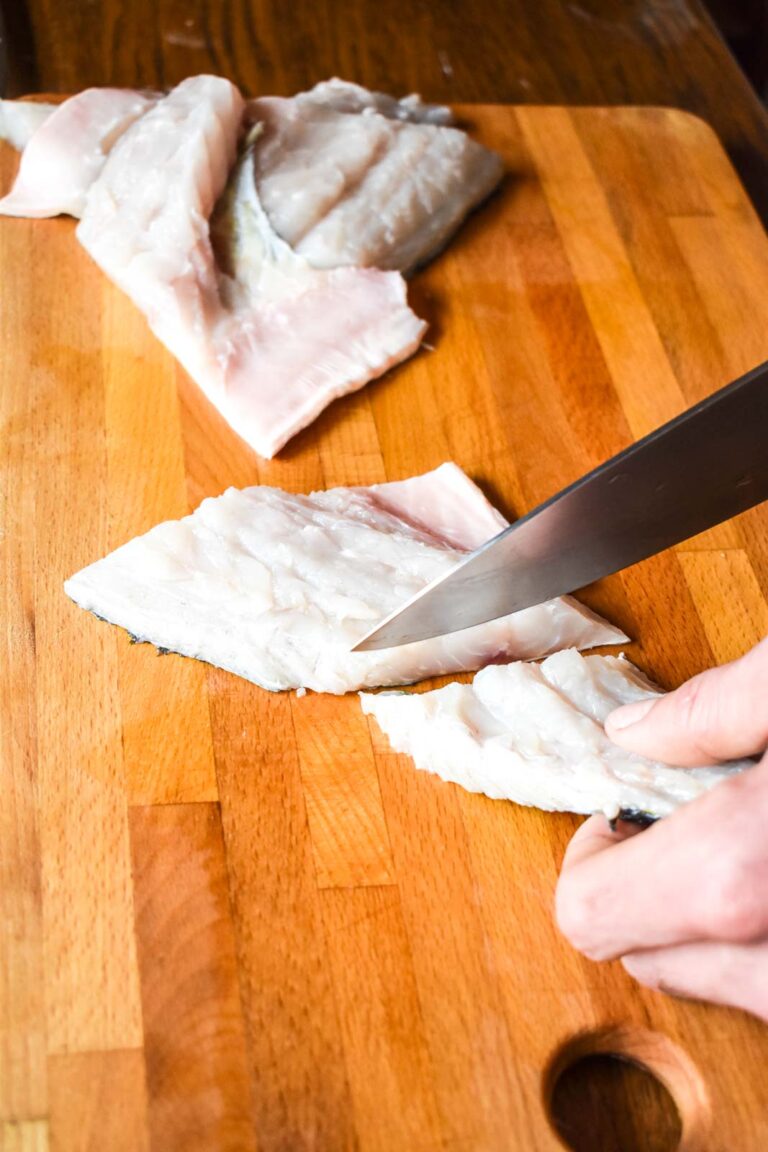
10. Store your fillets
If you want to prepare them in the next 2 days, you can season them and leave to rest in the fridge. To store the fillets for a longer time you can freeze them and take out when needed.
Quick instructions:
- Gut the fish (if not already gutted) .
- With a smaller knife, descale the fish in a sink and wash it thoroughly.
- Wipe out the remaining liquid from the surface.
- With kitchen scissors or a small (serrated) knife remove the fins.
- Remove the head.
- Find the top point and from there make a clean-cut line to the tail.
- Slowly deepen the cut, always cutting as near the bones and spine as you can!
- With tweezers remove the remaining bones.
- Cut your fillets into smaller pieces.
- Store or cook immediately.
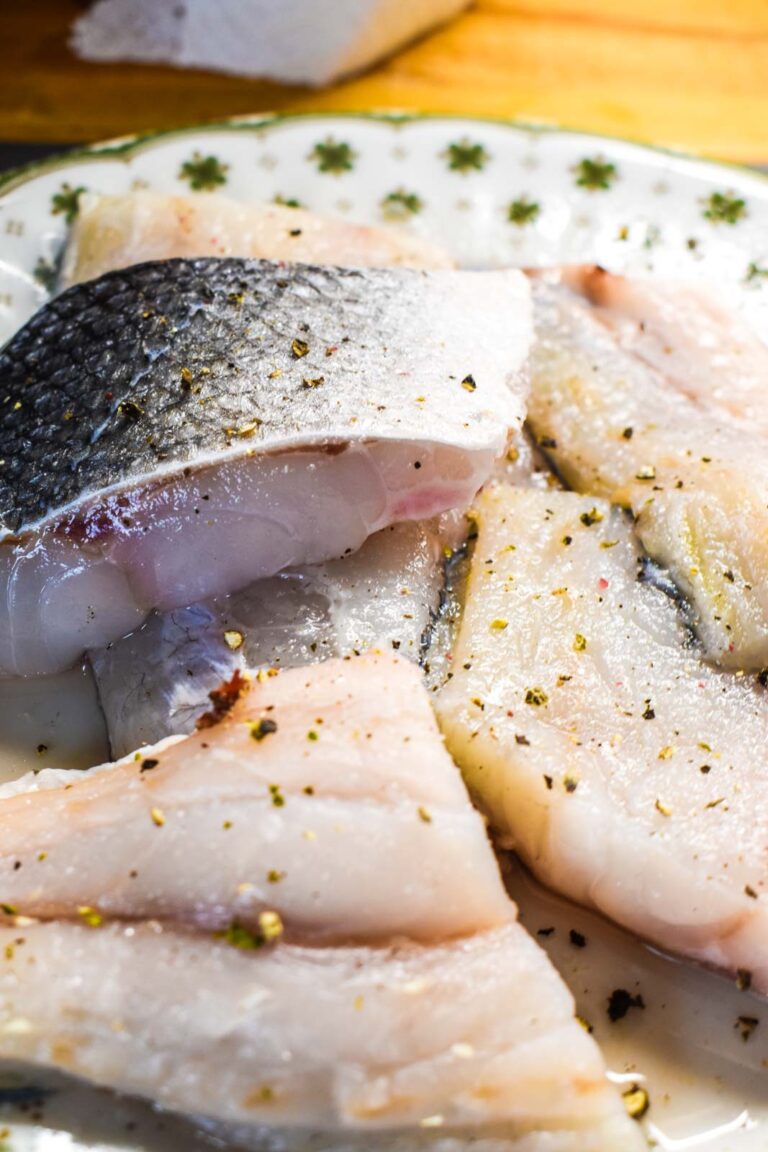
There it is my little fisherman. Today you learned how to fillet your fish with ease. As always share this ultimate guide with your uncle, auntie, grandma, girl/boy next door, the postman or even your seaman colleagues! Or don’t because you’re the special fish in the sea. See you soon my darlings!


